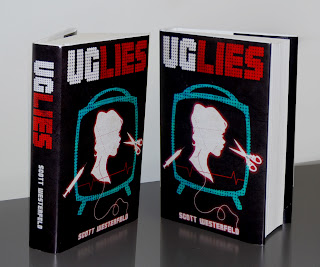Basically, a triptych is three individual pieces meant to be seen at the same time- a series, more or less. Letterpress is the term for the printing press- the original means of printing newspapers, etc. For this project, we used an iron hand press.
The theme of this project was "change." We had to incorporate letterpress alongside another production method of our choice.
Originally, I had a hard time coming up with a unique concept. However, during one of various web searches, I realized that change is a common factor in many fairytales. Spells, magic, and other trickery often involves a character or thing transforming from one state to another. Thus, my triptych highlights three well-known fairy tales with themes of change- The Frog Prince, The Little Mermaid, and King Midas.
Because I wanted to simulate the feeling of a classic fairytale, I chose to use the Old English typeface, a typeface that invokes images of leather-bound handwritten collections of tales. To further this illusion, I also chose to use a decorative border made wood type.
In addition to letterpress, the second production method I chose to utilize is embossing. Through trial and error, I determined to use white ink on watercolor paper, printing first the blocks of text. This had to be done very carefully, for if the paper shifted at all, it would leave a sticky spot to which the embossing powder would adhere. After a successful printing, I sprinkled colored embossing powder on the design then heated with a heat gun. Once set, I printing the border again sprinkling it with powder and using a heat gun, although this time I used gold for the border.
The gold border across all three pieces adds another element of continuity between the three triptych pieces The metallic hue variations of the text adds some diversity and interest while still adhering to the original concept.

























